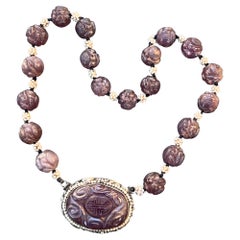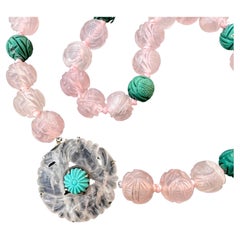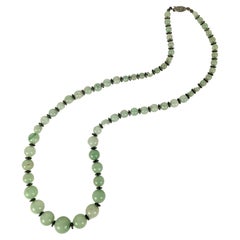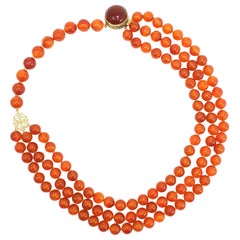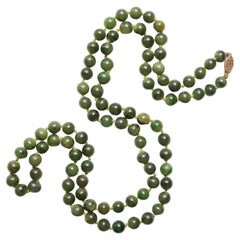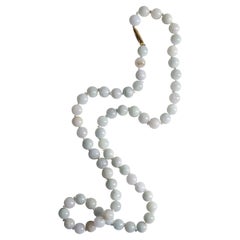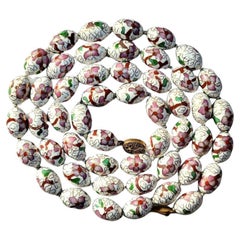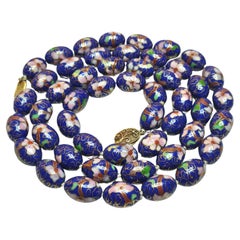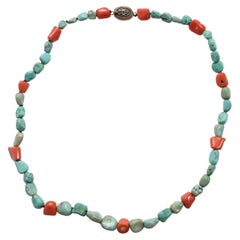Antique Chinese Beads
Early 20th Century Chinese Art Deco Antique Chinese Beads
Amethyst, Sterling Silver
Early 20th Century Chinese Art Deco Antique Chinese Beads
Quartz, Turquoise, Sterling Silver
1920s Chinese Art Deco Antique Chinese Beads
Jade, Silver
19th Century Chinese Antique Chinese Beads
Carnelian, 14k Gold, Vermeil
Late 19th Century Chinese Art Nouveau Antique Chinese Beads
Jade, 14k Gold
Early 19th Century Chinese Art Nouveau Antique Chinese Beads
Jade, Silver
Early 20th Century Chinese Art Deco Antique Chinese Beads
Early 20th Century Chinese Art Deco Antique Chinese Beads
Early 20th Century Chinese Art Deco Antique Chinese Beads
Coral, Turquoise, Silver
Early 1900s Chinese Art Deco Antique Chinese Beads
Onyx, Sterling Silver
Early 20th Century Chinese Art Deco Antique Chinese Beads
Quartz, Sterling Silver
Late 19th Century Chinese Artisan Antique Chinese Beads
Silver
Early 1900s Antique Chinese Beads
Amber, Silver
Early 20th Century Chinese Art Deco Antique Chinese Beads
Jade, Silver
1920s French Art Deco Antique Chinese Beads
Silver Plate, Gilt Metal
Early 20th Century Tibetan Artisan Antique Chinese Beads
Lapis Lazuli, Brass, Sterling Silver
19th Century Chinese Chinese Export Antique Chinese Beads
Jade
Early 20th Century Chinese Art Deco Antique Chinese Beads
Carnelian, Pewter, Brass
1880s Chinese Chinese Export Antique Chinese Beads
Hardwood, Beads
19th Century Chinese Chinese Export Antique Chinese Beads
Silk, Giltwood
19th Century Antique Chinese Beads
Jade
Early 20th Century Chinese Antique Chinese Beads
Sterling Silver
19th Century Antique Chinese Beads
Precious Stone
19th Century Antique Chinese Beads
Wood
19th Century Antique Chinese Beads
Jade
19th Century Antique Chinese Beads
Wood
Early 1900s Antique Chinese Beads
Coral
15th Century and Earlier Antique Chinese Beads
Late 19th Century Antique Chinese Beads
Jade
19th Century Antique Chinese Beads
Wood
1920s Chinese Art Deco Antique Chinese Beads
Coral, Vermeil, Silver, Brass, Gilt Metal
Early 20th Century Chinese Art Deco Antique Chinese Beads
Carnelian, Turquoise, Silver, Enamel
19th Century Chinese Antique Chinese Beads
Coral, Jade, Pearl, 14k Gold
1920s Chinese Art Deco Antique Chinese Beads
Agate, Jade, Rock Crystal
1920s Chinese Art Deco Antique Chinese Beads
Crystal, Rock Crystal, Sterling Silver
19th Century Chinese Chinoiserie Antique Chinese Beads
Brass
1920s Chinese Art Deco Antique Chinese Beads
Jade, Gold
Mid-19th Century Chinese Antique Chinese Beads
Agate, Coral, White Gold
Early 20th Century Indian Tribal Antique Chinese Beads
Glass
Early 19th Century Chinese Artisan Antique Chinese Beads
Agate, 14k Gold, Bronze
Early 20th Century Chinese Artisan Antique Chinese Beads
Carnelian, Jade, Labradorite, Gold-filled
1920s Chinese Art Deco Antique Chinese Beads
Amethyst
1910s Chinese Antique Chinese Beads
Jade, 14k Gold, Enamel
1920s Chinese Artisan Antique Chinese Beads
Turquoise, Gold Plate
1920s Art Deco Antique Chinese Beads
Early 20th Century Chinese Baroque Antique Chinese Beads
Silver, Sterling Silver
19th Century Chinese Chinese Export Antique Chinese Beads
Porcelain
Early 20th Century Chinese Art Deco Antique Chinese Beads
Early 20th Century Chinese Art Deco Antique Chinese Beads
Early 20th Century Chinese Art Deco Antique Chinese Beads
Jade, Yellow Gold
15th Century and Earlier American Artist Antique Chinese Beads
Lapis Lazuli, 22k Gold
18th Century Chinese Antique Chinese Beads
Amber
Late 19th Century Antique Chinese Beads
Turquoise, Silver
Early 20th Century Asian Art Deco Antique Chinese Beads
Jade
1920s Chinese Antique Chinese Beads
1920s Chinese Art Deco Antique Chinese Beads
Carnelian, Vermeil, Enamel
21st Century and Contemporary Georgian Antique Chinese Beads
Diamond, Cultured Pearl, Chalcedony, Gold Plate
Late 19th Century Antique Chinese Beads
Silver
21st Century and Contemporary Georgian Antique Chinese Beads
Diamond, Cultured Pearl, 14k Gold, Gold Plate
20th Century Chinese Edwardian Antique Chinese Beads
Jade, 22k Gold
- 1
Antique Chinese Beads For Sale on 1stDibs
How Much are Antique Chinese Beads?
- 1stDibs ExpertApril 5, 2022Identifying an antique bead is a careful art. First inspect the bead for any seams that could indicate it was molded in a contemporary fashion. Antique beads tend to have a larger center hole. Inspect the bead for signs of natural age. An expert can help you confirm the approximate age of your bead. Shop a range of antique beads from top sellers on 1stDibs.
- 1stDibs ExpertOctober 24, 2024To tell if a beaded purse is an antique, first look at the frame. Antiques will usually have die-stamped frames, so you should be able to see the pattern on both sides of the metal. The frame is typically cast with newer bags, resulting in the pattern only being on one side. Next, examine the clasps. If your bag is antique, you should be able to detect a gap or seam where the maker soldered on the clasp, while a newer reproduction will frequently have a one-piece clasp and frame with no seams. Finally, look at the interior lining. Antique purses often have a ribbon sewn onto the seam where the lining meets the frame, but this detail will usually not be present on a reproduction. If you have doubts about your bag's age, consult a certified appraiser or knowledgeable antique dealer. On 1stDibs, shop a collection of beaded bags.
- 1stDibs ExpertNovember 4, 2024To identify antique Chinese furniture, look carefully at its details. Chinese craftsmen often built furniture using mortise and tenon joinery, eliminating the need for nails and screws. If you see this type of hardware, your piece is likely not at least 100 years old, especially if the hardware still looks new and shiny. Since antique furniture was handmade, you will normally see slight imperfections, such as tool marks or slight variations in carvings. Pieces that appear completely uniform and pristine are less often genuine antiques.
When present, maker's marks can also be helpful. Research the marks to learn more about when the maker was active and producing pieces like yours. Alternatively, you can have a certified appraiser or experienced antique dealer evaluate your furniture for you.
Shop an assortment of antique Chinese furniture.  Lotus GallerySeptember 23, 2020
Lotus GallerySeptember 23, 2020The best way to know is to take it to an expert, such as an appraiser, reputable dealer or auction house, or museum
 PAGODA REDOctober 7, 2020
PAGODA REDOctober 7, 2020To determine the age of a Chinese furniture piece, look carefully at the joinery and finish. Natural expansion and contraction of the wood over time will cause a joint to protrude or retract, distorting a once-seamless fit. Antique lacquer finishes become crackled and worn over time. Areas of exposed wood, such as the underside of a table, the footrest of a chair, or the back of a cabinet should appear raw and dry compared to the finished surface. With use, the legs of tables and chairs become weathered near the bottom from precipitation and use.
